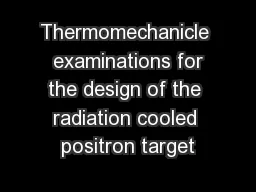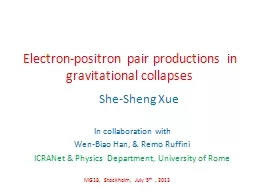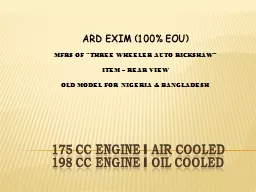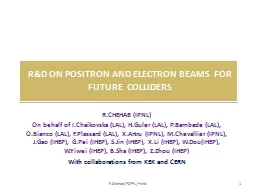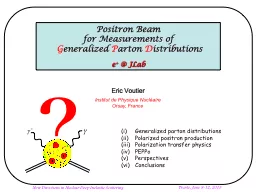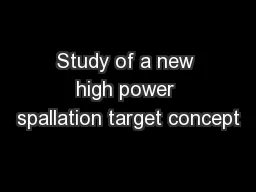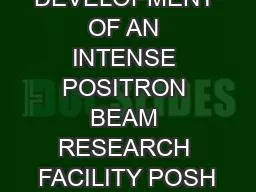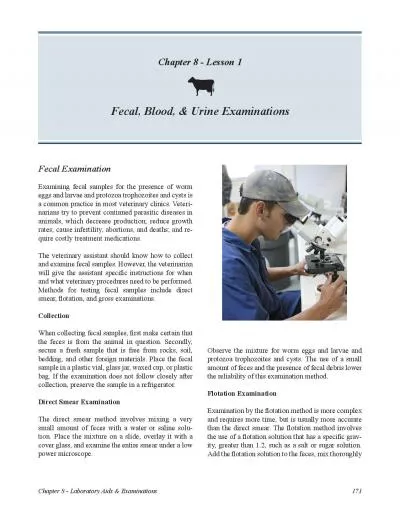PPT-Thermomechanicle examinations for the design of the radiation cooled positron target
Author : min-jolicoeur | Published Date : 2019-02-27
Sabine Riemann DESY Andriy Ushakov UHH Alexandre Ignatenko DESY Kahled Alharbi DESY Felix Dietrich DESY THWildau Peter Sievers CERN Laboratoire lAccélératuer
Presentation Embed Code
Download Presentation
Download Presentation The PPT/PDF document "Thermomechanicle examinations for the d..." is the property of its rightful owner. Permission is granted to download and print the materials on this website for personal, non-commercial use only, and to display it on your personal computer provided you do not modify the materials and that you retain all copyright notices contained in the materials. By downloading content from our website, you accept the terms of this agreement.
Thermomechanicle examinations for the design of the radiation cooled positron target: Transcript
Download Rules Of Document
"Thermomechanicle examinations for the design of the radiation cooled positron target"The content belongs to its owner. You may download and print it for personal use, without modification, and keep all copyright notices. By downloading, you agree to these terms.
Related Documents

